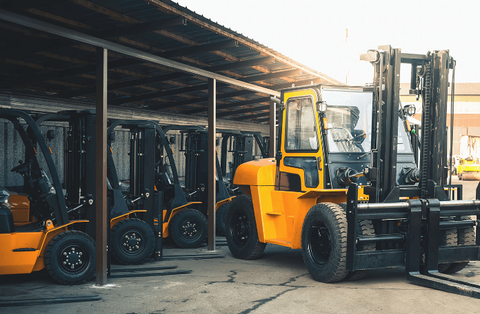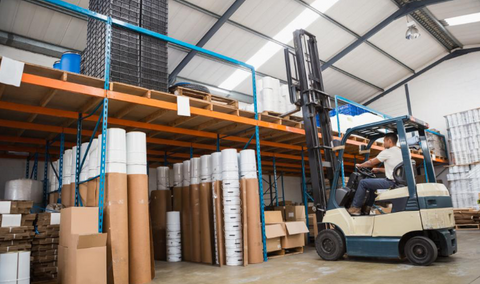In warehouse operations, forklifts serve as indispensable assets, streamlining material handling processes. As helpful as they are, forklifts pose significant risks and potentially dangerous situations for workers if OSHA’s guidelines and safety protocols aren’t followed correctly.
Let’s take a look at the most common OSHA Forklift Violations in hopes of creating a safer work environment.

Training Matters
One of the most important things for forklift safety is proper training. OSHA requires that all forklift operators receive comprehensive training to ensure they know how to operate the equipment safely.
This training covers everything from basic operations to emergency situations. Regular refresher courses are also important to keep skills sharps and safety practices fresh in operators' minds.
Timely Inspections are Needed
Just like cars need regular maintenance, forklifts need regular inspections to make sure they're in the best working condition. These inspections help identify any potential issues before they become serious problems.
Things like checking the brakes, tires, and steering are essential for keeping forklifts safe to use. Skipping inspections not only puts workers at risk but also violates OSHA regulations.

Safety First
Following safety rules while operating a forklift is crucial. This means driving at a safe speed, slowing down around corners, and paying attention to surroundings. Distractions like using a phone or listening to music while driving can lead to accidents.
It's important for forklift operators to stay focused on the task at hand to avoid dangerous situations.
Maintenance Matters
Regular maintenance is key to keeping forklifts running smoothly. This includes things like changing the oil, replacing worn-outs parts, and keeping the forklift clean. Neglecting maintenance not only increases the risk of accidents but can also lead to costly repairs down the line.

Photo by: StayInspected
Watch Out for Pedestrians
Forklifts sharing space with pedestrians can be a recipe for disaster if proper precautions aren't taken. Clear markings, designated walkways, and warning signs can help prevent accidents. Both forklift operators and pedestrians need to be aware of their surroundings and watch out for each other.
Loading Safety
Properly loading a forklift is essential for safe operation. This means making sure the load is balanced and secure before moving. Overloading a forklift or carrying an unstable load can lead to tipping or loss of control.
Practice Safety Standards
By addressing these common issues and emphasizing safety at every step, warehouses can foster a culture of safety, reducing the likelihood of accidents.
And by installing a ProEnclosure roof, windshield, or set of doors, you're providing the ultimate protection for your forklift operators.






Leave a comment